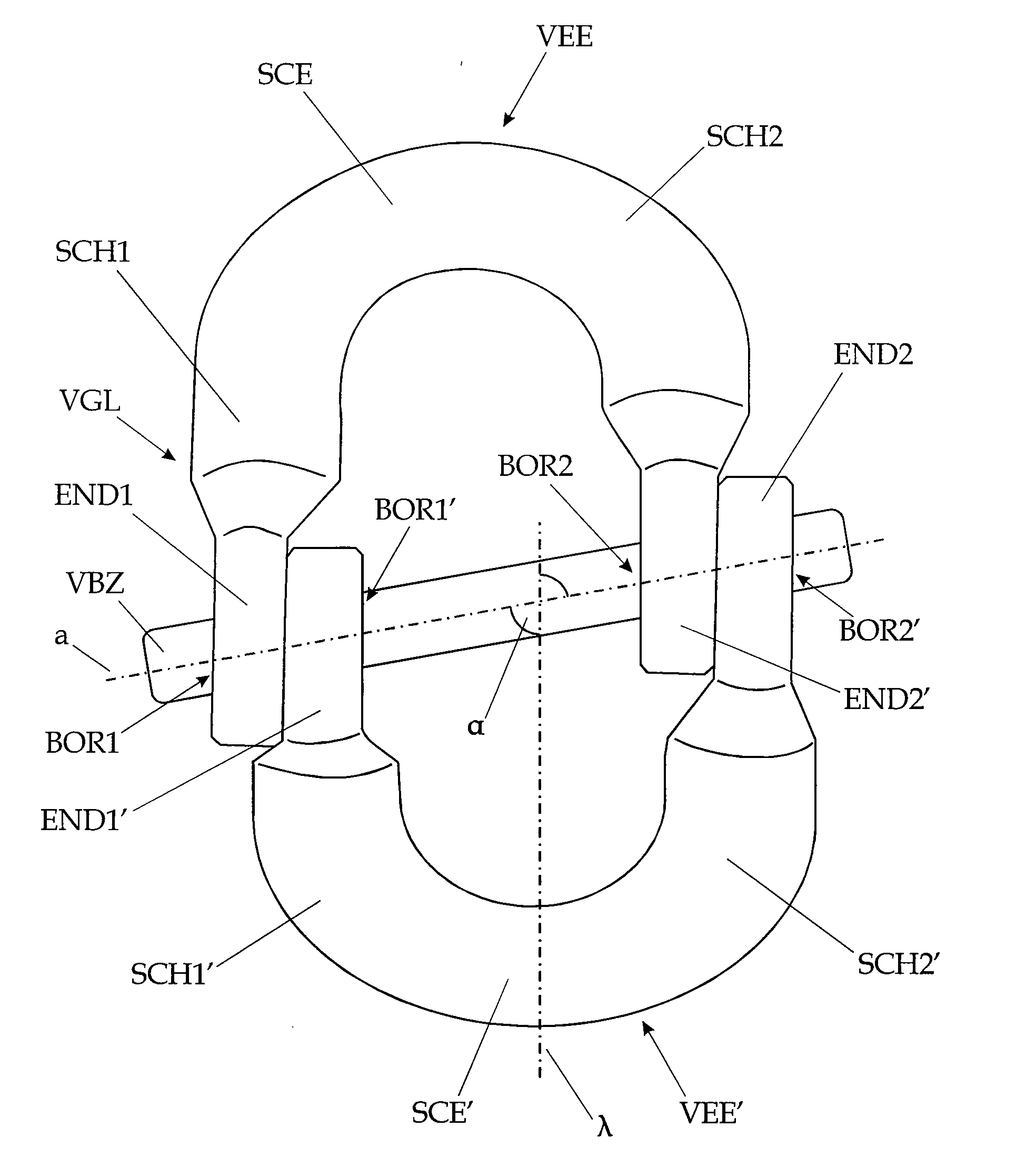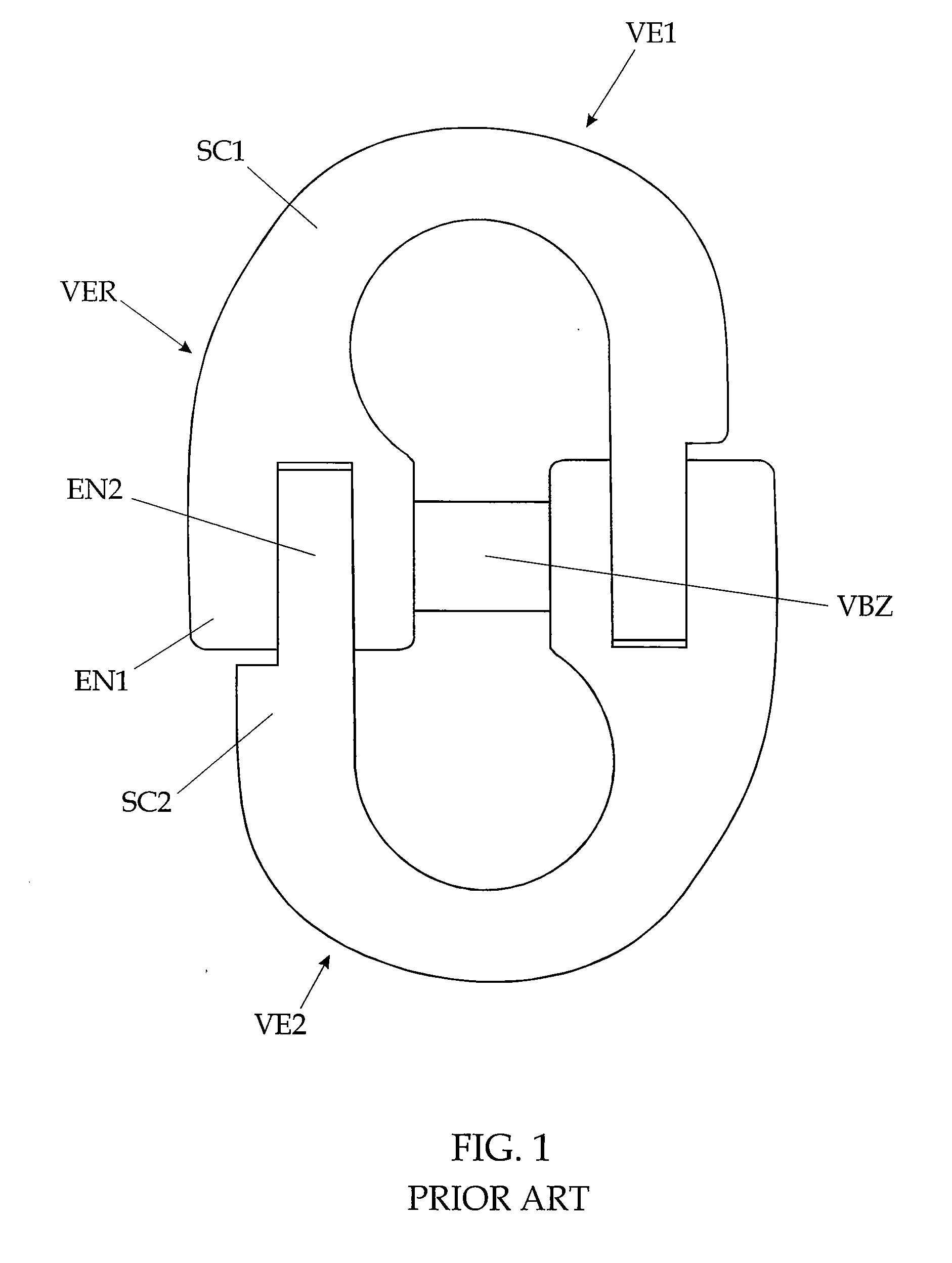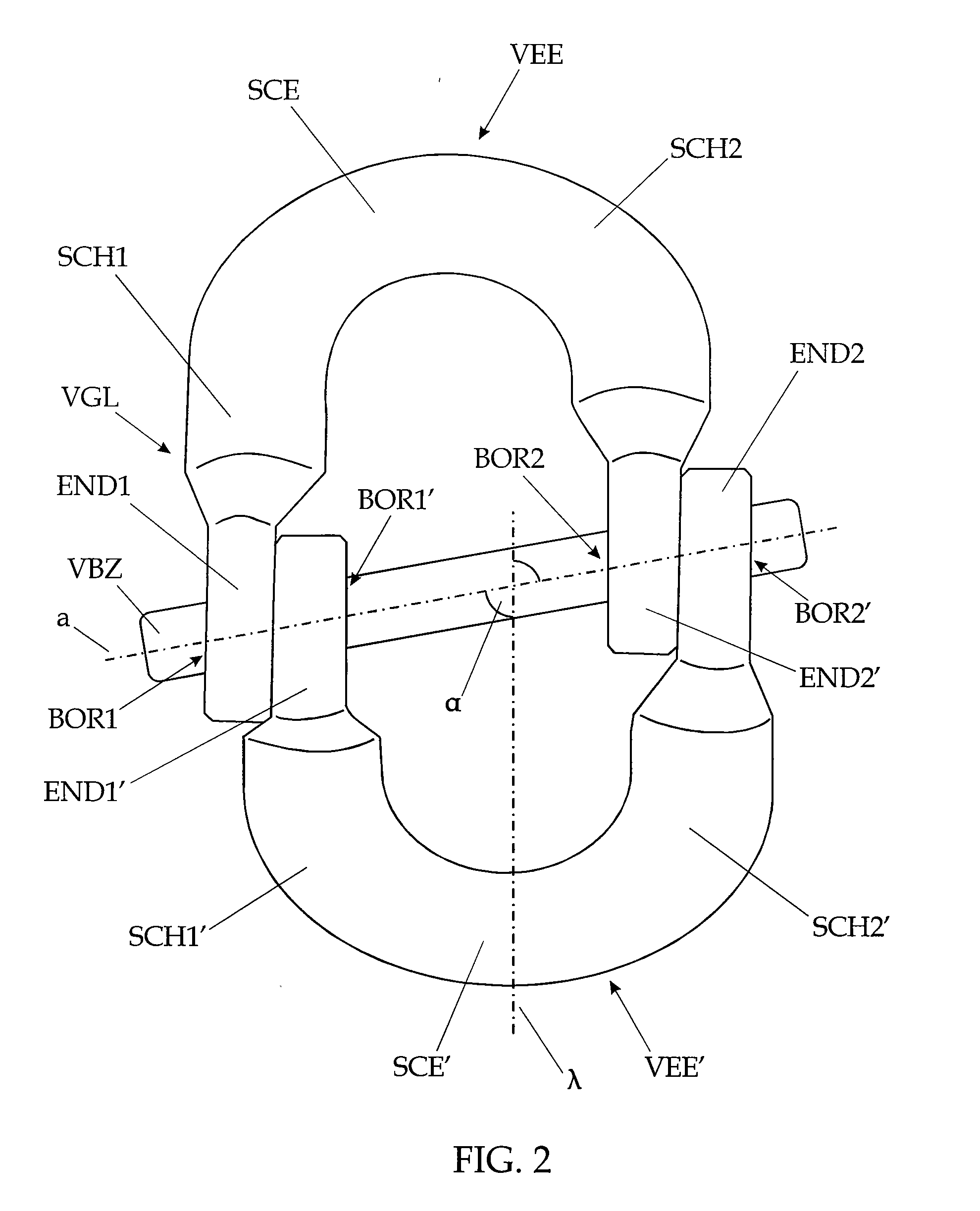Coupling element for a shackle
a coupling element and shackle technology, applied in the direction of chain elements, driving chains, chain fastenings, etc., can solve the problems of increasing manufacturing costs, affecting the strength properties, so as to achieve simple and cheap production and favorable strength properties
- Summary
- Abstract
- Description
- Claims
- Application Information
AI Technical Summary
Benefits of technology
Problems solved by technology
Method used
Image
Examples
Embodiment Construction
[0013]Certain terminology is used in the following description for convenience only and is not limiting. The terminology includes words specifically mentioned, derivatives thereof and words of similar import. The exemplary embodiment illustrated below is not intended to be exhaustive or to limit the invention to the precise form disclosed. This embodiment is chosen and described to best explain the principle of the invention and its application in practical use and to enable others skilled in the art to best utilize the invention.
[0014]According to FIGS. 2 and 3, a shackle of the invention VGL has two coupling elements VEE, VEE′ of substantially U-shaped cross-region. Each coupling element VEE, VEE′ has a cusp region SCE, SCE′ and two legs SCH1, SCH2, SCH1′, SCH2′ extending therefrom. At each of the free ends END1, END2, END1′ END2′ of the legs SCH1, SCH2, SCH1′, SCH2′ there is provided a bore BOR1, BOR2, BOR1′, BOR2′, which bores BOR1, BOR2, BOR1′, BOR2′ of a coupling element VEE, ...
PUM
 Login to View More
Login to View More Abstract
Description
Claims
Application Information
 Login to View More
Login to View More - R&D
- Intellectual Property
- Life Sciences
- Materials
- Tech Scout
- Unparalleled Data Quality
- Higher Quality Content
- 60% Fewer Hallucinations
Browse by: Latest US Patents, China's latest patents, Technical Efficacy Thesaurus, Application Domain, Technology Topic, Popular Technical Reports.
© 2025 PatSnap. All rights reserved.Legal|Privacy policy|Modern Slavery Act Transparency Statement|Sitemap|About US| Contact US: help@patsnap.com



